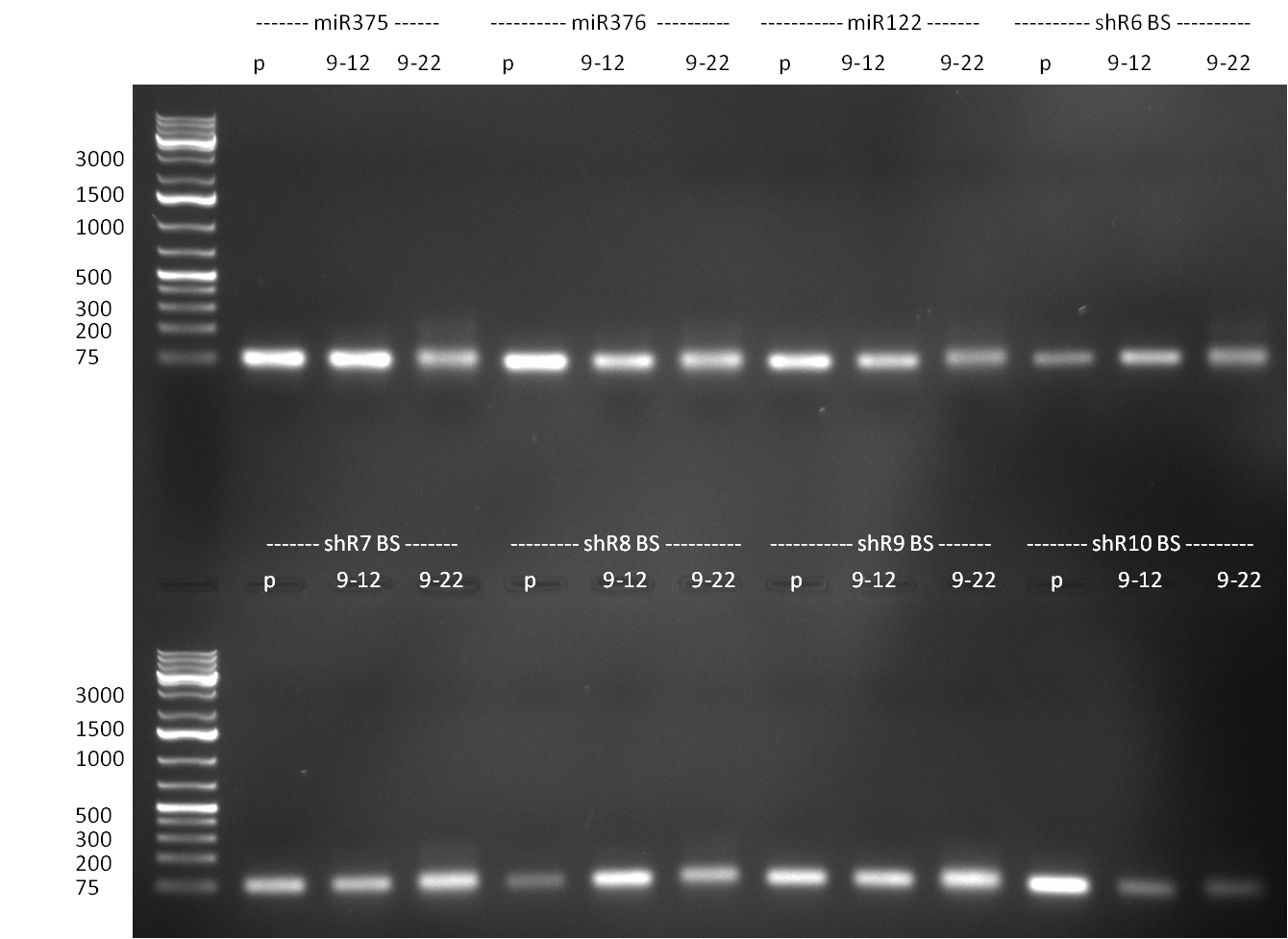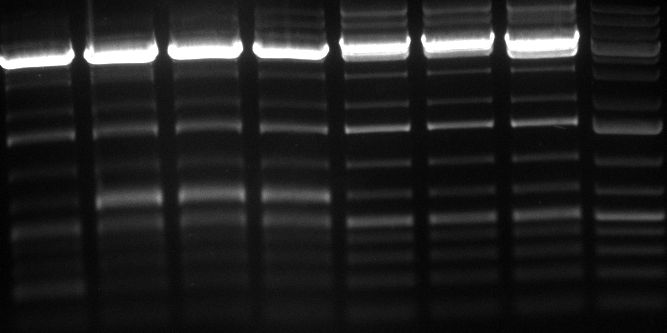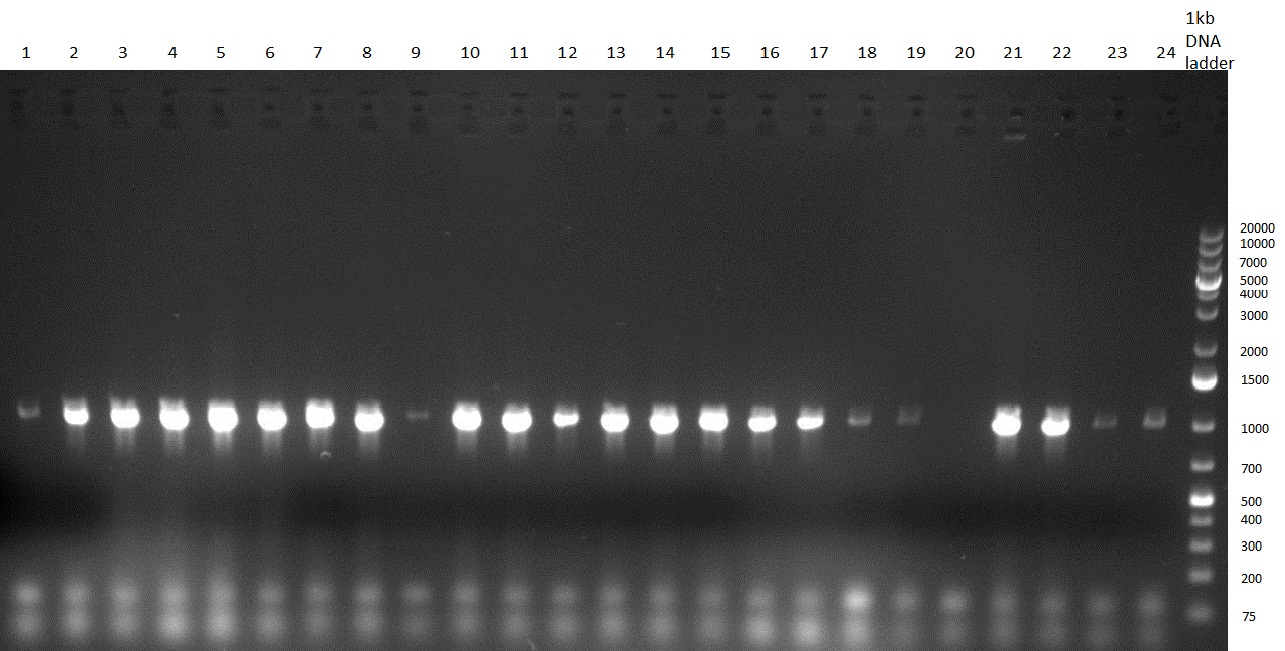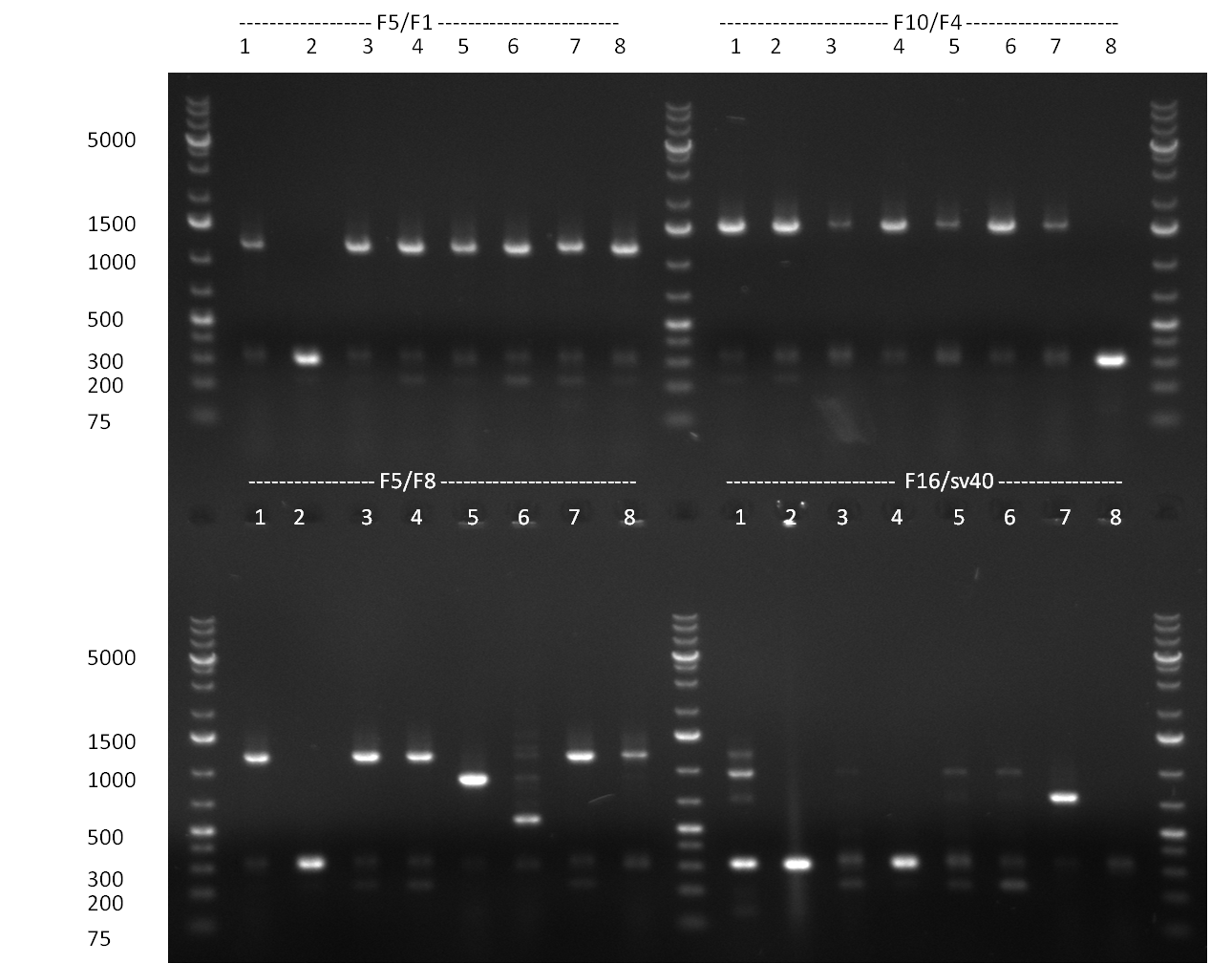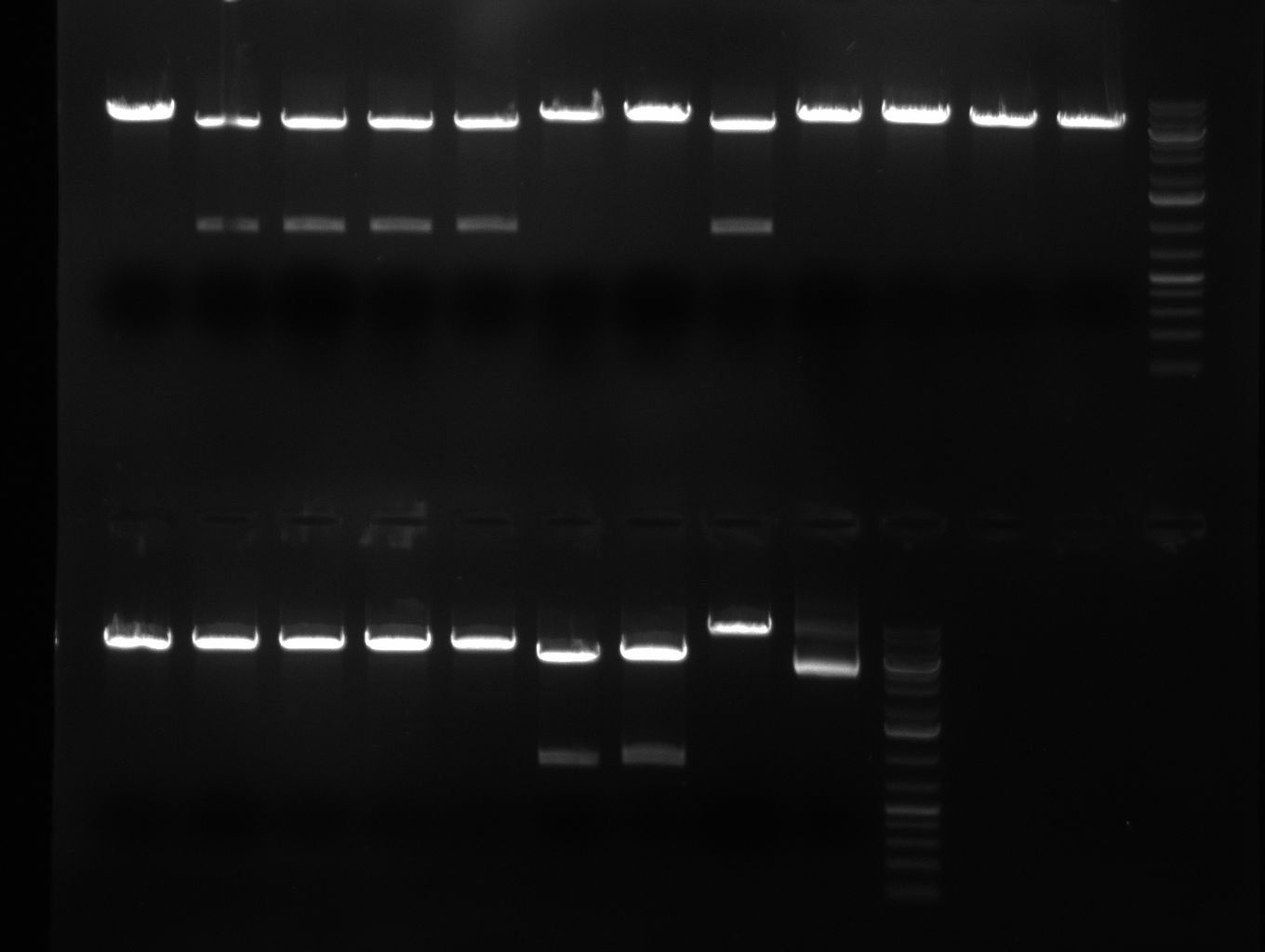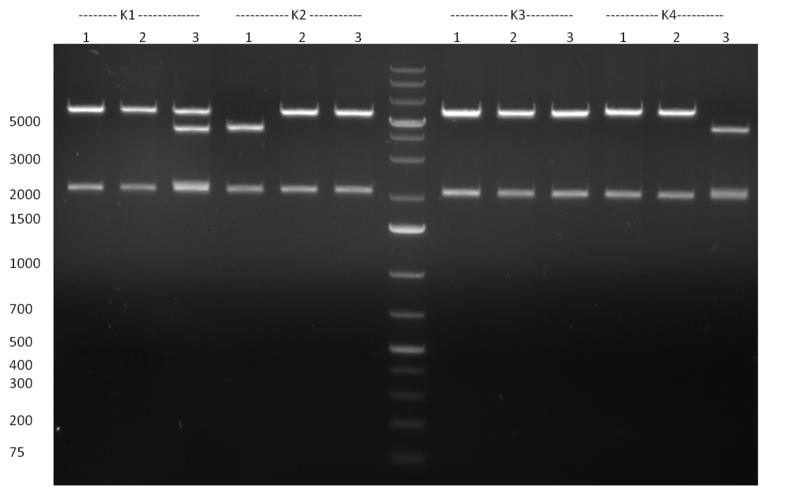Team:Heidelberg/Notebook/miRNA Kit/September
From 2010.igem.org
(→20/09/2010) |
(→23/09/2010) |
||
| Line 303: | Line 303: | ||
** digestion of [[Igem2010/Main/Library/Constructs/pSMB miTrigger#basal components and cloning strategy | R23]] and [[Igem2010/Main/Library/Constructs/pSMB miTrigger#basal components and cloning strategy | R33]] with either SpeI and PstI or EcoRI and NheI | ** digestion of [[Igem2010/Main/Library/Constructs/pSMB miTrigger#basal components and cloning strategy | R23]] and [[Igem2010/Main/Library/Constructs/pSMB miTrigger#basal components and cloning strategy | R33]] with either SpeI and PstI or EcoRI and NheI | ||
** ligation into digested {{Part|pSB1A3}}, [https://2010.igem.org/Transformation transformation], growing on selective agar plates (ampicillin), following [https://2010.igem.org/3A_Assembly standard protocol recommendations] | ** ligation into digested {{Part|pSB1A3}}, [https://2010.igem.org/Transformation transformation], growing on selective agar plates (ampicillin), following [https://2010.igem.org/3A_Assembly standard protocol recommendations] | ||
| + | |||
| + | <br /><br /><br /><br /><br /><br /><br /><br /><br /><br /> | ||
===24/09/2010=== | ===24/09/2010=== | ||
Revision as of 14:48, 25 October 2010

|
|
|||||||||||||||||||||||||||||||||||||||||||||||||||||||||||||||||||||||||||||||||||||||||||||||||||||||||||||||||||||||||||||||||||||||||||||||||||||||||||||||||||||||||||
 "
"






